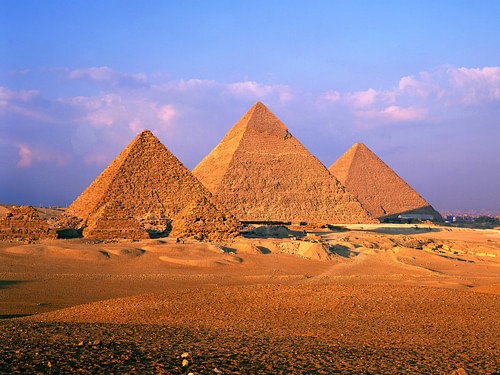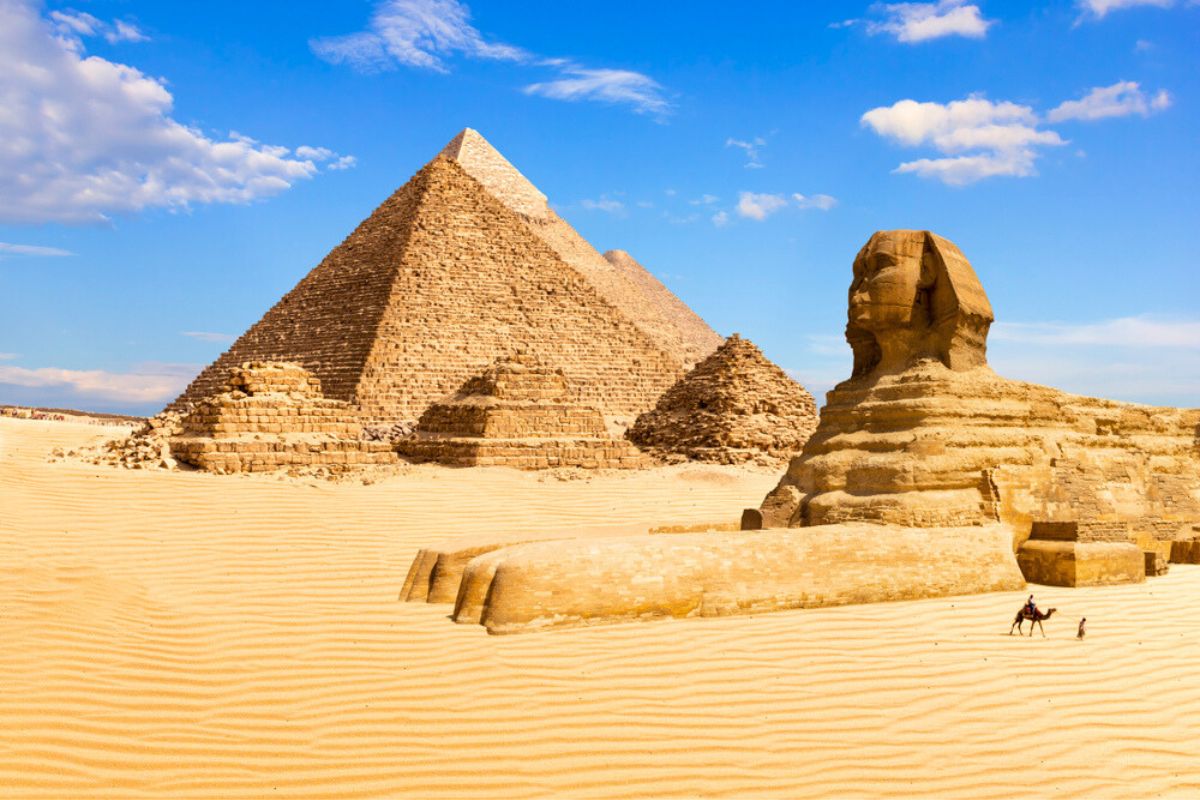The Pyramids of Giza, located on the outskirts of Cairo, Egypt, are one of the most iconic and fascinating archaeological sites in the world. Standing tall for over 4,500 years, these ancient structures continue to captivate visitors with their grandeur and mystery. The site is home to three main pyramids – the Great Pyramid of Khufu (also known as Cheops), the Pyramid of Khafre, and the Pyramid of Menkaure – as well as the enigmatic Sphinx. Let’s delve into the wonders of the Pyramids of Giza and discover their historical significance, architectural marvels, and intriguing secrets.
Overview of the Pyramids of Giza
The Pyramids of Giza, located on the outskirts of Cairo, Egypt, are a remarkable testament to the ingenuity and craftsmanship of the ancient Egyptians. These monumental structures, including the Great Pyramid of Khufu, the Pyramid of Khafre, and the Pyramid of Menkaure, were built as tombs for the pharaohs. Standing as symbols of power and eternity, they have stood the test of time and continue to inspire awe and wonder in visitors from around the world.
Historical significance of the Pyramids

The Pyramids of Giza hold immense historical significance, representing the architectural and cultural achievements of ancient Egypt. These structures provide valuable insights into the civilization’s religious beliefs, social hierarchy, and burial practices. They serve as a testament to the power and wealth of the pharaohs, showcasing their divinity and eternal presence in the afterlife. The pyramids also demonstrate the exceptional engineering skills and meticulous craftsmanship of the ancient Egyptians, captivating historians and archaeologists with their enduring legacy.
The Great Pyramid of Giza
The Great Pyramid of Giza, also known as the Pyramid of Khufu, is the largest and oldest of the three pyramids at Giza. It was built as a tomb for Pharaoh Khufu during the Old Kingdom of Egypt. Standing at 481 feet tall, it was the tallest man-made structure for over 3,800 years. Its construction involved immense planning and engineering precision, with an estimated 2.3 million stone blocks used in its construction. The interior of the pyramid consists of chambers and passages that were designed to protect the pharaoh’s body and belongings in the afterlife. Today, visitors can explore the Great Pyramid and marvel at its magnificent architecture and historical significance.
History and construction of the Great Pyramid
The Great Pyramid of Giza, also known as the Pyramid of Khufu, was constructed during the Old Kingdom of Egypt as a tomb for Pharaoh Khufu. Its construction involved meticulous planning and engineering precision, with an estimated 2.3 million stone blocks used. The pyramid’s historical significance and magnificent architecture continue to captivate visitors today.
Inside the Great Pyramid
Inside the Great Pyramid, you can explore various chambers and passages, including the King’s Chamber and the Queen’s Chamber. The King’s Chamber is located at the heart of the pyramid and contains a granite sarcophagus. The Queen’s Chamber, on the other hand, is smaller in size and believed to have been unfinished. As you navigate these ancient spaces, you’ll be amazed by the sheer size and remarkable craftsmanship of the pyramid’s interior.
The Pyramid of Khafre

The Pyramid of Khafre is the second largest pyramid at Giza and is known for its iconic limestone casing stones that still partially remain. Its complex interior features a burial chamber and multiple passageways, providing a fascinating glimpse into ancient Egyptian architecture and burial practices. As you explore this monumental structure, marvel at its impressive design and imagine the grandeur it once held.
Architecture and design of the Pyramid of Khafre
The Pyramid of Khafre is a testament to the ancient Egyptians’ architectural prowess and design ingenuity. Its majestic structure, with its perfectly aligned limestone casing stones, showcases the precision and skill of the builders. The pyramid’s unique shape and layout, including the Sphinx guarding its entrance, add to its grandeur and mystique. As you stand before this magnificent pyramid, take a moment to admire the intricate details that make it a true marvel of architecture.
Significance and purpose of the Pyramid of Khafre

The Pyramid of Khafre, built during the Fourth Dynasty of ancient Egypt, holds great significance as the burial place of Pharaoh Khafre and as a symbol of his power and immortality. Its purpose was to serve as a monumental pyramid tomb and a spiritual gateway for the pharaoh’s journey into the afterlife. The pyramid’s grandeur and architectural excellence continue to captivate visitors today.
The Pyramid of Menkaure
The Pyramid of Menkaure, also known as the Pyramid of Mykerinos, is the smallest of the three main pyramids at Giza. It was built as a tomb for Pharaoh Menkaure during the Fourth Dynasty. Its architectural design, with three subsidiary pyramids and a temple complex, showcases the grandeur of ancient Egyptian burial practices. Despite its smaller size, it remains an impressive testament to the power and wealth of the pharaohs.
Exploring the Pyramid of Menkaure
Exploring the Pyramid of Menkaure allows you to witness the intricate architecture and admire the craftsmanship that went into its construction. From the grand entrance to the narrow corridors, each step reveals the secrets of ancient Egyptian burial practices. You can marvel at the hieroglyphics and admire the remnants of the temple complex, providing a glimpse into the rich history of this majestic structure.
Comparison between Menkaure and other pyramids

The Pyramid of Menkaure stands apart from the other pyramids at Giza due to its smaller size and unique design. While the Great Pyramid of Khufu is the largest and most well-known, and the Pyramid of Khafre is known for its impressive Sphinx, Menkaure’s pyramid offers a different perspective on ancient Egyptian architecture. Its compact size and intricate details make it a fascinating point of comparison among the pyramids of Giza.
Sphinx at Giza
The Sphinx at Giza is a magnificent statue with the body of a lion and the head of a human that stands guard over the pyramids. It is believed to have been built during the reign of Pharaoh Khafre and has since become an iconic symbol of ancient Egypt. Many mysteries surround the Sphinx, including its purpose and the secrets it may hold. Visitors to Giza can marvel at this enigmatic monument and explore its intriguing history.
History and mysteries of the Sphinx
The Sphinx at Giza holds a rich history and is shrouded in mysteries. It is believed to have been built during the reign of Pharaoh Khafre, but its purpose remains unclear. Numerous theories speculate about its role, from a guardian of the pyramids to a symbol of royal power. The Sphinx continues to captivate visitors with its enigmatic presence, inviting them to uncover its secrets.
Link between the Sphinx and the Pyramids
The Sphinx at Giza is intricately linked to the pyramids. Positioned strategically in front of the Pyramid of Khafre, it is believed to have served as a guardian and symbol of royal power. The Sphinx and the pyramids together create a powerful and enigmatic landscape that continues to fascinate and intrigue visitors from around the world.
Visiting the Pyramids of Giza
To visit the Pyramids of Giza, it is recommended to join a guided tour for a comprehensive experience and informative insights. Tickets can be purchased at the entrance, and it is advisable to arrive early to avoid crowds. Wear comfortable clothing and footwear, as there is a lot of walking involved. Don’t forget to bring water, sunscreen, and a hat to protect yourself from the sun. Enjoy exploring these ancient marvels and capture memorable photos along the way.
Guided tours and ticket information

To make the most of your visit to the Pyramids of Giza, consider joining a guided tour. These tours provide informative insights and a comprehensive experience. Tickets can be purchased at the entrance, so it’s recommended to arrive early to avoid crowds. Wear comfortable clothing and footwear, and don’t forget to bring water, sunscreen, and a hat for sun protection. Capture unforgettable memories as you explore these ancient wonders.
Tips for an enjoyable visit to the Pyramids
For an enjoyable visit to the Pyramids of Giza, here are some tips:
- Arrive early to avoid crowds and get a better experience.
- Join a guided tour for informative insights and a comprehensive visit.
- Wear comfortable clothing and footwear for exploring the site.
- Don’t forget to bring water, sunscreen, and a hat for sun protection.
- Capture unforgettable memories by taking photos of these ancient wonders.
For More Blogs visit Hillw
